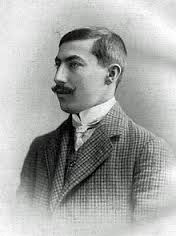
Learning to beat the Dutch
Today, I am going to learn to play against the Dutch. Anyone who has watched my YouTube videos or read my blog has heard me refer to certain openings as "forced wins for Black against me." The Dutch falls in that category. The truth is that these "forced win" openings are really just openings I've been too lazy to really study and as a result I tend to get bad positions with white because I don't understand the ideas.
Its time to do the solve the Dutch problem. Since my most recent loss against the Dutch was a Stonewall so we'll start there. Here is what I "knew" about the Dutch StoneWall before today.
-
The Light Squared Bishop Belongs on g2. In my first ever OTB game against the Dutch (my first time facing the Dutch period.) I put the bishop on d3 which just got in the way and much later in the game I eventually wound up getting the bishop to g2 in a round about way.
-
White should try to play e4. I almost never attempted to execute this plan because it looks silly to play f3 and e4 because it shuts in the bishop on g2.
-
It should favor white to trade dark square bishops. I figure the idea behind this one is because the DSB is black's “good bishop” and could help with his king side attack whereas white's DSB doesn't have a lot going on usually.
-
Sometimes white plays Nh3 and puts the knight on f4. I honestly don't know why.
-
After Black has played Nbd7, White can play cxd to open the C-file and try to infiltrate via c7. This is my main plan when I play against the Dutch. I base the plan off of the following Alekhine game which is not a dutch but does eventually get a similar pawn structure:
I am going to attempt to expand/correct this knowledge by reading Boris Avrukh's “GM Repertoire Vol. 2” and then follow up by reviewing master games in the line that Boris recommends, focusing on the line played in my most recent Dutch game. As I face the Dutch again, I will repeat the process in new lines until I get to the point where I feel I have a strong working knowledge of the ideas behind the Dutch.
Without further adieu: My Dutch, where we didn't go dutch. :) (John, if you're reading this, is that a better pun?"
Defeat of the Day:
Here is a video I posted so you can see the game and my thoughts during the game:
To be fair, I actually got quite a good position out of the opening but it wasn't as a result of good play. I had a lot of help from my opponent. Where I really failed was continuing to restrict Black's plan and continue with my own plan. I was only spared going into my of daffy C-file plan because he captured first! And so I think an opening survey is warranted.
Now that we've seen my failure, let's check out the theory as it relates to my Dutch game.
Theory of the Dutch Stonewall
Avrukh's books had a ton of information about all the Dutch systems but I quickly found that my game follows the Be7 with a later c6 Stonewall. Here is what Avrukh has to say:
What I knew then... What I know now
2. White can play for e4. Correct again but now I am armed with at least one situation on when its effective, and I have a simple maneuver to solve the bishop problem.
3. White should trade DSB. Correct again! and from Kasparov I've learned a pretty effective way of handling the DSB.
4. White does sometimes play Nh3 and Nf4 but according to Avrukh there are some potential move order issues and so he settled on a system that avoids the idea altogether! I like avoiding theory so that another win.
5. Alas, my precious cxd and C-file action was never even hinted at... and so I must leave that idea behind. But 4 of 5 ain't bad!
